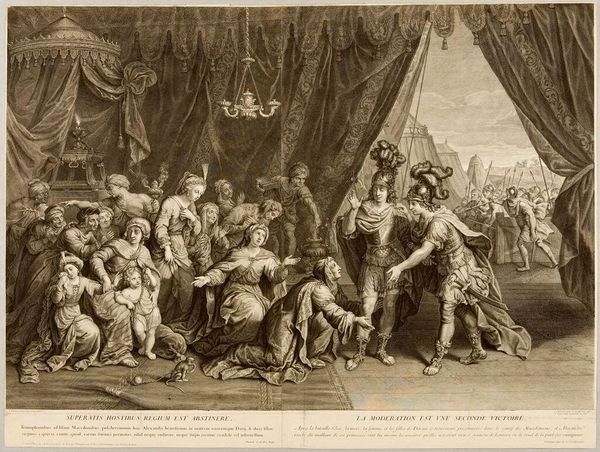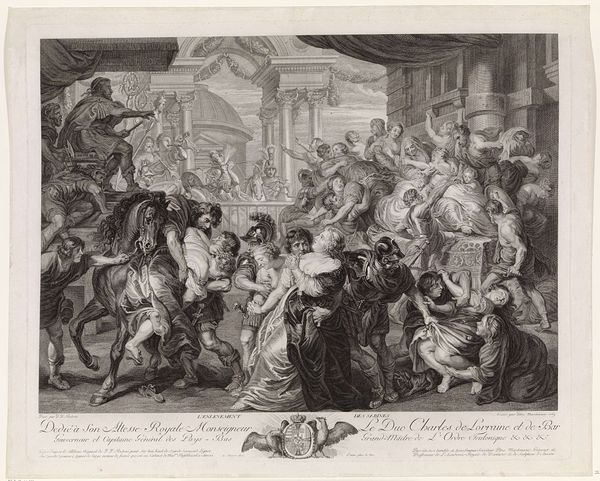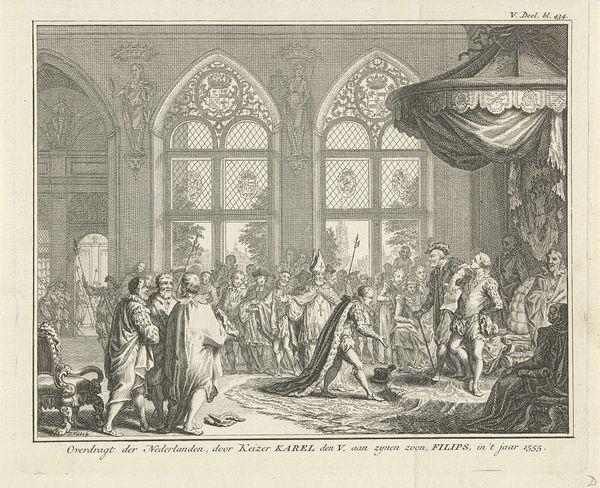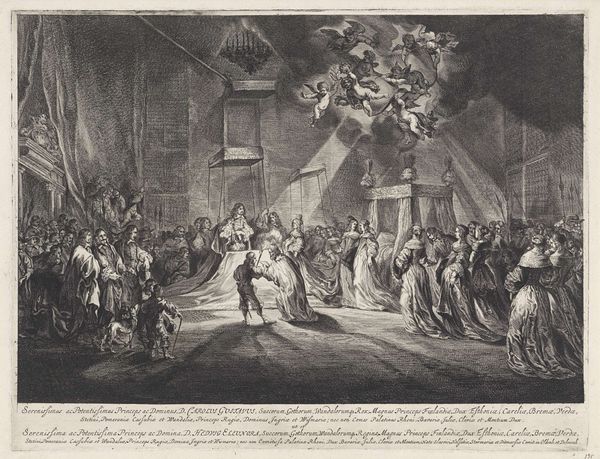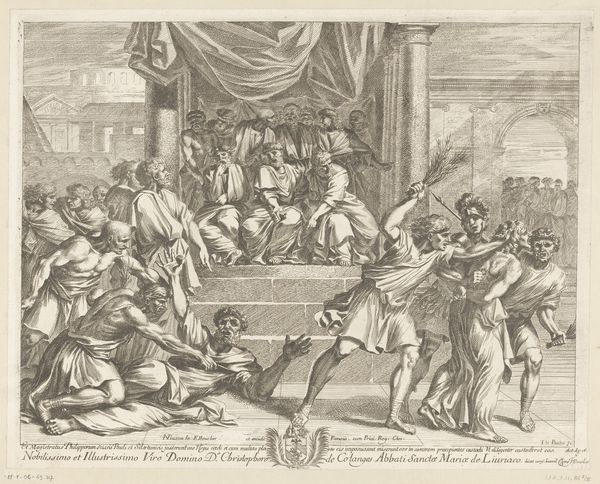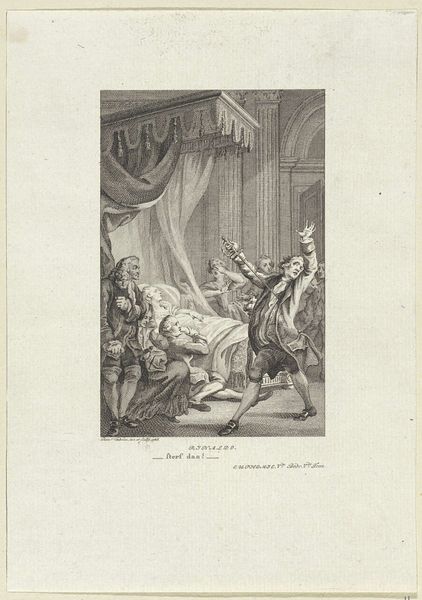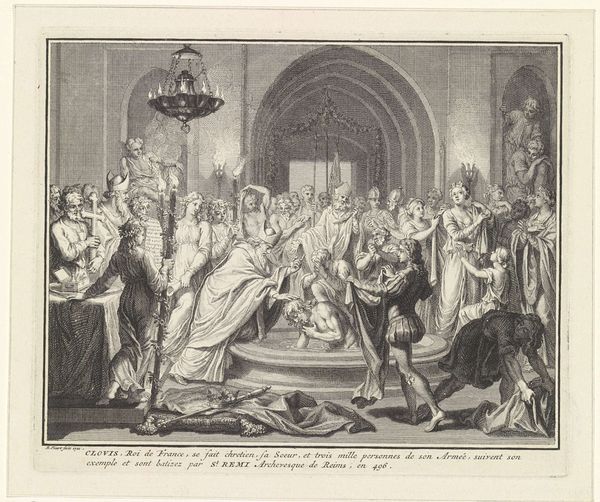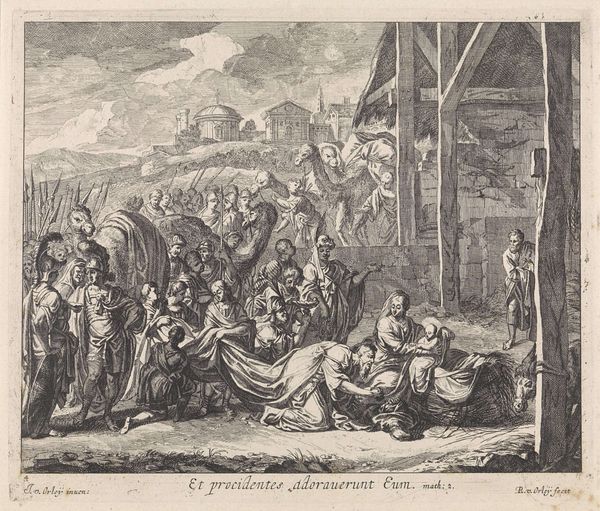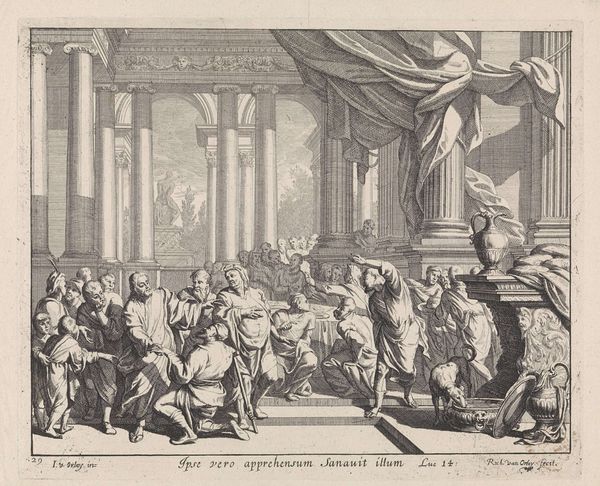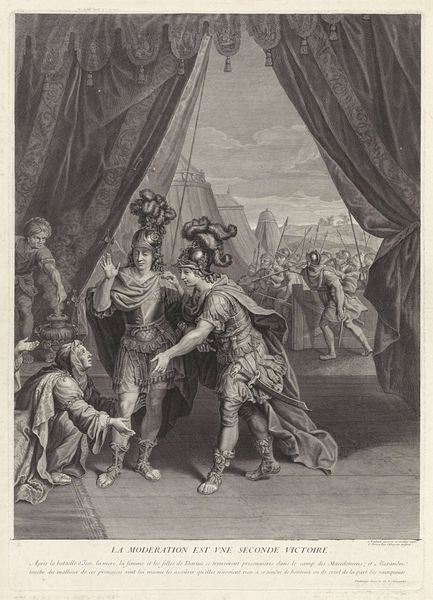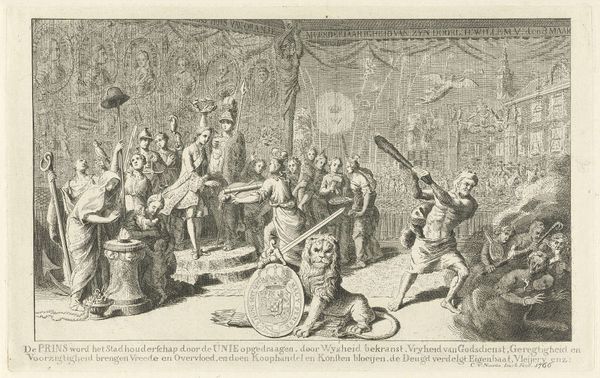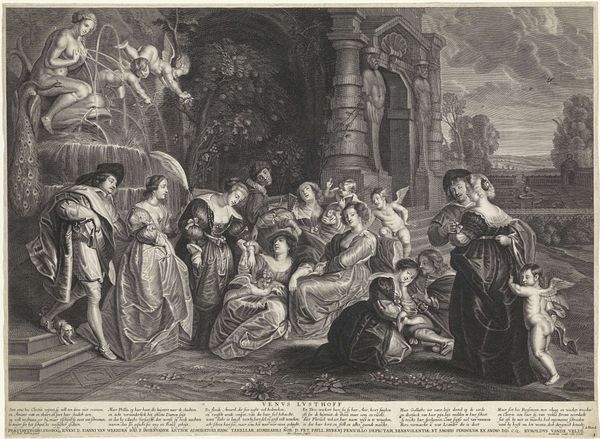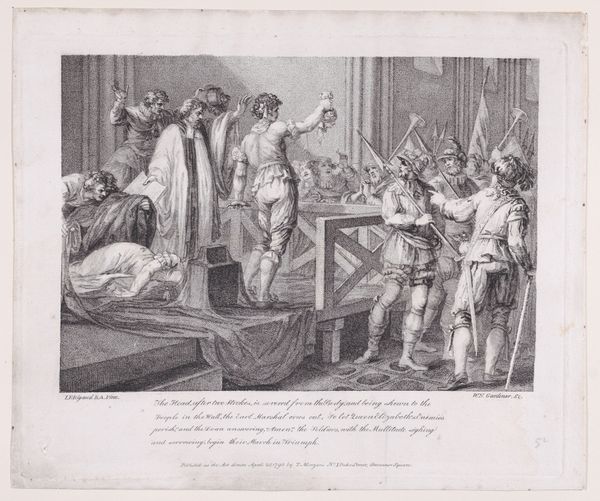
#
pencil drawn
#
aged paper
#
toned paper
#
light pencil work
#
pencil sketch
#
old engraving style
#
sketch book
#
personal sketchbook
#
old-timey
#
19th century
Dimensions: height 685 mm, width 430 mm, height 688 mm, width 487 mm
Copyright: Rijks Museum: Open Domain
Curator: This engraving, housed here at the Rijksmuseum, presents a dramatic tableau from history. Entitled "Alexander the Great with the family of Darius," it was created between 1666 and 1707 by Gerard Edelinck. Editor: My initial reaction is a sense of controlled chaos. The composition feels almost stage-like, with a clear foreground and background, yet the multitude of figures creates a visual density that is both compelling and a bit overwhelming. Curator: Indeed, the scene is carefully staged, mirroring theatrical conventions of the period. We see Alexander meeting Darius's family, offering them safety and respect after his victory. The image taps into Alexander's reputation for magnanimity. Notice the contrast: the stoic warrior against the emotional outpouring of the defeated family. This motif underscores the power of mercy versus might. Editor: Formally, the artist uses light and shadow masterfully to guide the eye. The contrast emphasizes the drama and helps to distinguish key figures within the throng. It's all about contrasting textures, from the intricate armor to the soft drapery. The linear perspective leads the eye to Alexander's troops on the horizon and provides a tangible backdrop. Curator: The image leans heavily into the symbol of gesture. The Queen Mother kneels, her hands outstretched, embodying submission, gratitude, perhaps even supplication. This is juxtaposed with Alexander’s firm stance and extended arm that denotes control and assurance. He’s offering not just protection, but also a promise of a new order, one guided by different rules of conduct and conflict. Editor: I find myself pondering the somewhat flat treatment of the faces, they’re generic in a way, as though embodying archetypes, rather than capturing individual personalities. This allows Edelinck to focus our attention on the overall dynamic. It's fascinating how the absence of intense individual expression reinforces the power of the collective emotional response. Curator: The engraving is definitely embedded in its cultural context. The story of Alexander serves as an allegory for leadership. The image is a call for rulers to practice restraint in victory, thus etching themselves into a heroic legacy. Editor: Looking at it closely one last time, the level of detail and overall impression suggests not only meticulous skill, but also thoughtful manipulation of emotional response through form. Curator: Ultimately, it’s a carefully crafted depiction of a ruler, but, on a wider scope, a timeless narrative of compassion during war.
Comments
No comments
Be the first to comment and join the conversation on the ultimate creative platform.
